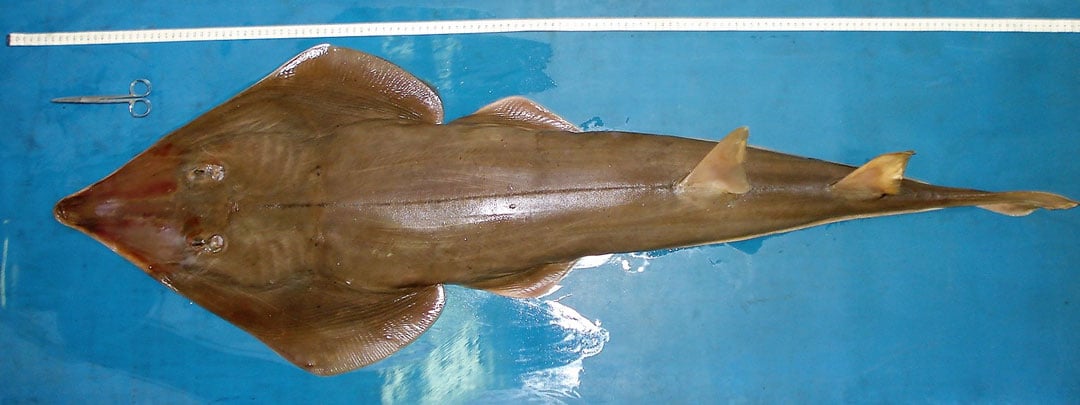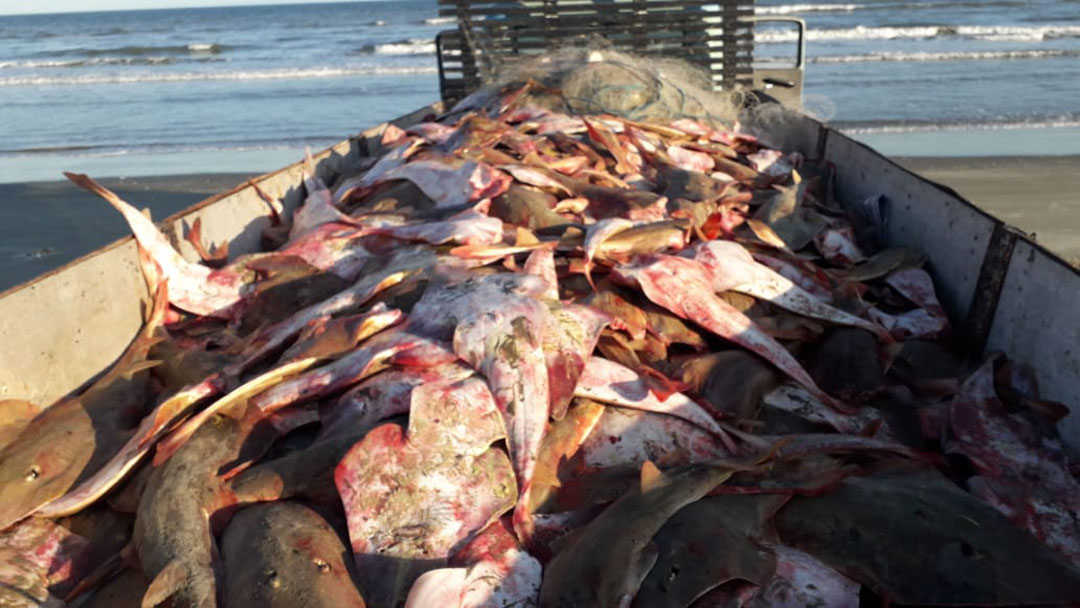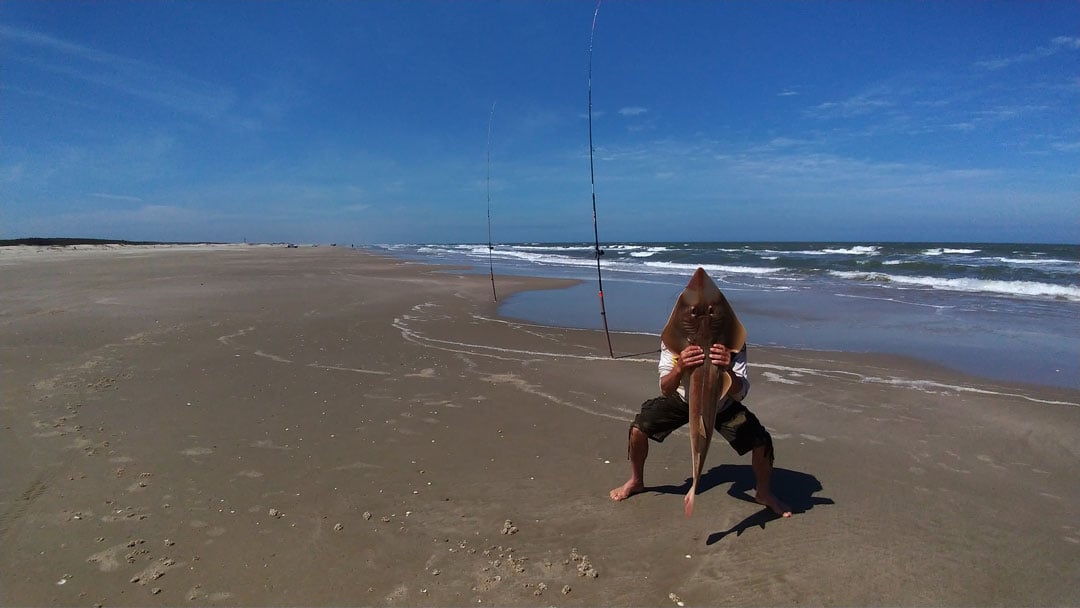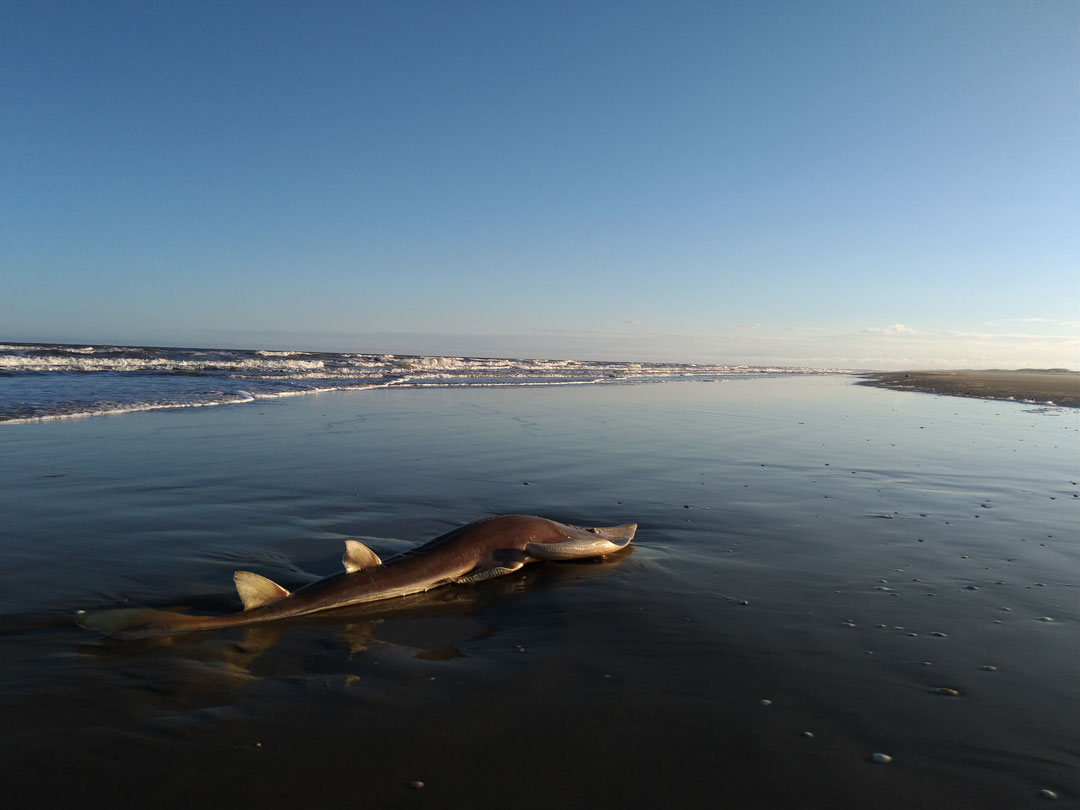The Brazilian guitarfish: one of the most endangered marine species in Brazil
The Brazilian guitarfish is one of the most endangered species in the South Atlantic, especially in Brazilian waters. With population declines of more than 80% in the last decades, landing and commercialization are prohibited by the Brazilian legislation since 2004. However, despite this prohibition, this species is still largely captured in Brazil.

Brazilian guitarfish captured in southeastern. This specimen was an adult female, with 138 cm total length. Photo © Otto Gadig | Elasmobranch Research Laboratory

Massive illegal capture of guitarfishes in southern Brazil in 2018. Photo: Brazilian Military Police
During the summer, female guitarfishes aggregate in shallow warm waters, where the embryonic development takes place rapidly. This species shows embryonic diapause, which means the embryonic development remains in stand-by for some months and continues when the water gets warmer. After giving birth, the guitarfishes copulate, and a new reproductive cycle begins. Taking advantage of this behaviour, fisherman capture guitarfishes on the coast, mostly in the summer. In this context, once you capture a guitarfish in the summer, you’re not only capturing one but more guitarfishes- the female and all of her offspring.

Brazilian guitarfish embryos develop rapidly from one week to another. Because this species exhibits embryonic diapause, the embryos barely develop for months until the female migrates to shallow warmer water to complete embryonic development and give birth. Photo © Mariana Martins
Fishing guitarfishes is also a cultural tradition among artisanal and recreational fishermen, being passed from father to son. Several older fisherman report that guitarfish numbers have declined in the past decades and that it is more difficult to capture guitarfishes nowadays. They also reported that most of the captured guitarfishes were pregnant females which eventually aborted tiny embryos still in the fishing gear.

Local fishermen capture several guitarfishes a day in southern Brazil, despite its prohibition. Photo © Mariana Martins
In southern Brazil, it’s not hard to find people selling guitarfish meat, even though it is illegal commerce. Local and street markets sell these specimens because there are still people interested in consuming this meat. In fact, some people don’t even know that the Brazilian guitarfish is an endangered elasmobranch. For this reason, as long as people intentionally or not consume guitarfish meat, there will still be large illegal captures of this species.

Dead guitarfish discarded by artisanal fishermen in southern Brazil. Photo © Mariana Martins
